Sinai campaign. Part of 2. String and climax
(Because of the wrong hope, do not leave the right benefits.)
Roman poet Avian
Unarmed Israel was already on the verge of a real military catastrophe, when suddenly the world changed and presented it with a chance in the form of two unexpected strong allies ...
This gift came from the same Nasser. Nasser decided to build a dam on the Nile, in Aswan.
Thoughts about the dam arose for a reason. The population of Egypt grew by leaps and bounds and everyone wanted to eat. In 1800, the country had 2,5 million inhabitants; their became 8 million by 1886 year. In 1947, the Egyptians became 20 million, and by 1960, the population was supposed to reach 30 million. (Today there are almost 100 million people.) And the Nile is still the same around the desert. So poverty and hunger.

The Egyptians decided to increase the acreage at the expense of irrigated agriculture and, accordingly, they needed a dam. They did not have money for this grand event, and they turned to the United Kingdom, the United States and the World Bank for loans. They needed a billion dollars. The Americans promised a loan of 56 million, the World Bank was going to take 200 million, and the British agreed to 14 million, provided that Egypt would find the rest of 700 million from itself. Nasser made a deal with the USSR weapons on 200 million dollars. You either buy a weapon, or a dam line, hinted offended British. But for me, the Minister of Foreign Affairs of the Soviet Union, Dmitry Shepilov, promised an interest-free loan for 120 million dollars, dropped Nasser, and with your sop to 14 million you can wipe off.
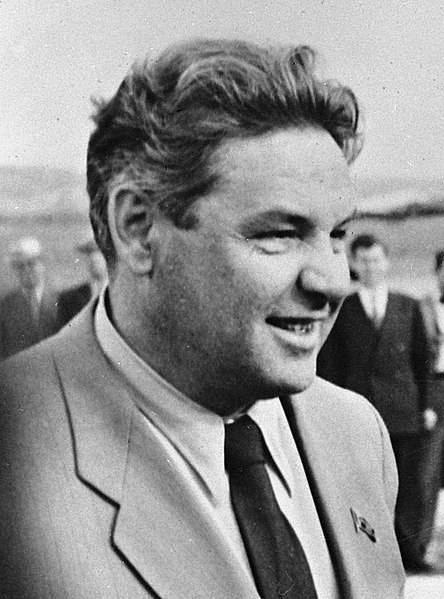
Dmitry Trofimovich Shepilov
The British withdrew their loan proposal, followed by both the Americans and the World Bank.
And then, on July 26 of 1956, in a speech on the occasion of the 4 anniversary of the Egyptian revolution, Nasser informed his people that he decided to nationalize the Suez Canal ...
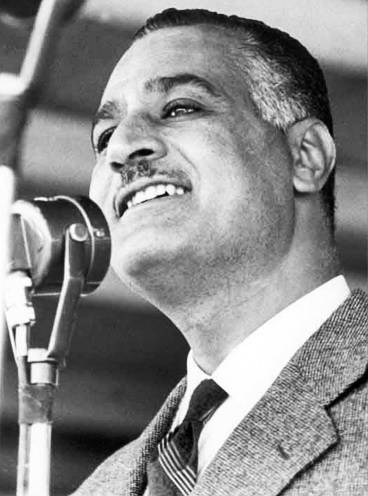
Everything immediately fell into place. England and France, who jointly owned the channel, received money for the passage of ships. Now they were deprived of this money. In addition to mercantile considerations, the channel was a strategic object. For example, during the Second World War, Italians and Germans could not use it. And third, what a slap in the face to two major colonial powers!
In England, this message had the effect of a bombshell. If that personified the British Empire in 1956, it was the Suez Canal.
The prestige of the British government in Iraq and in general throughout the “English” Middle East was under such a threat that the fundamental decision on the military operation was made by Eden’s cabinet almost immediately. The French expressed their full readiness to help - their interests did not suffer as much as the British, but they were co-owners of the Channel, and the idea of weakening or completely eliminating the Nasser regime seemed to them desirable.
The fleet of England we move to Malta, the fleet of France gathers in Toulon. We are moving to Egypt 100 English and 30 French ships, bombing Cairo and Alexandria, parachuting 50 thousand British and 30 thousand French soldiers, ending with Nasser, so that no more eyes plague. Everyone was going to finish in September. It was simple and clear, but further complex diplomatic dances began. America resisted.
British Prime Minister E. Eden tried to convince the Americans that Nasser was “Nile Hitler,” but the United States was against the war. Europeans cooled down, but did not calm down.
British Prime Minister Eden wanted to by all means turn English actions into a “cloak of legality”, which was not easy, because formally the right was on the side of Egypt. The channel was part of the sovereign territory of this country. In addition, he really did not want these actions to look like a turn of England in the Arab-Israeli dispute on the side of Israel - England had to remain "a friend of the Arabs".
Quarrel was only with Nasser.
The French and the British sat down to think what to do with Egypt.
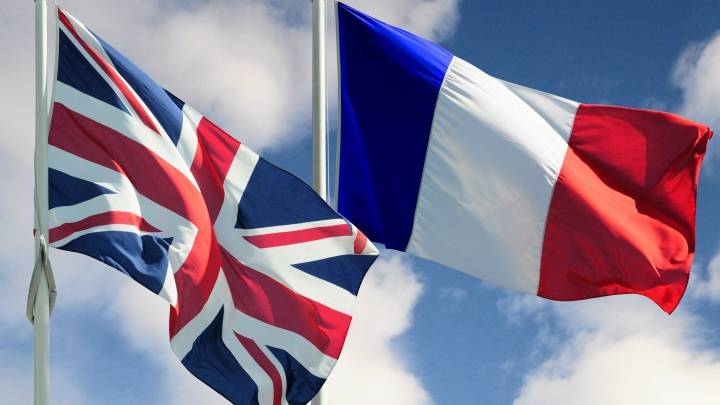
The French now remained more inclined to military operations than the British. The unsuccessful Vietnam War taught them nothing. After all, only in 1954, after an eight-year bloody war, all the troops had to withdraw from Indochina, and here again saber-rattling. (Today, few people remember that the Indochina War was going on from 1946-th to 1954, where the French were at war with the Vietnamese.) The French were more loyal to Israel. This is understandable. The French colonies of Tunis and Morocco achieved independence in 1956. In Algeria, the national movement was also strong, and the average Frenchman didn’t have anything but disgust for the Arabs during this period. The British, on the contrary, after the loss of India in 1947, the other colonial failures have not yet been observed, and Ghana, Jamaica, Malta, Singapore, Sierra Leone, Barbados, British Guiana, Bermuda, Bahamas, Malaya and even Cyprus remained English.
The French held out their arms to Israel before the Suez crisis. Already in April, 1956, they began to supply him with Mr. Mister jets.
Even before the official nationalization of the channel, the French knew that Nasser was their opponent. The Israelis had long supplied intelligence information about the Algerian insurgents and their ties to Egypt.
Against this background, Israel asked the French for a colossal (according to its concepts) quantity of weapons: 200 tanks, 72 jets, 40 thousand shells, 10 thousand missiles. It was a pleasure of $ 80 million. The French agreed, and from July 1956, solid, modern French-made weapons began to arrive in Israel.
Now the position of Israel for the first time became strategically advantageous. To deceive the Americans, the British and the French came up after a long joint secret meetings of a cunning, as it seemed to them, plan. Israel is taken in equal allies and well armed. Next, Israel begins a war with Egypt, for good reason, more than enough, the same closed Tyrant straits. Israeli troops are moving to the Suez Canal. When the channel is already within reach, the British and French present an ultimatum to the two belligerent countries to withdraw their troops from the canal zone so as not to harm navigation. Egypt should theoretically refuse, because it is fighting on its land, and then the British and French troops invade the Suez zone "to ensure the safety of navigation" and the European channel again. The straits to the Gulf of Eilat will be open, the passage through the canal for Israeli ships is free, Israel will be pleased. As the British did not want to take as allies their former mandated hooligans, but they had to. In short, the French offered Israel an alliance in a joint attack on Egypt ...
We are approaching the time when Ben-Gurion made a major political mistake, associating himself with Great Britain and France, two decrepit and crumbling colonial powers, and neglected the assessment of the positions of the United States and the USSR.
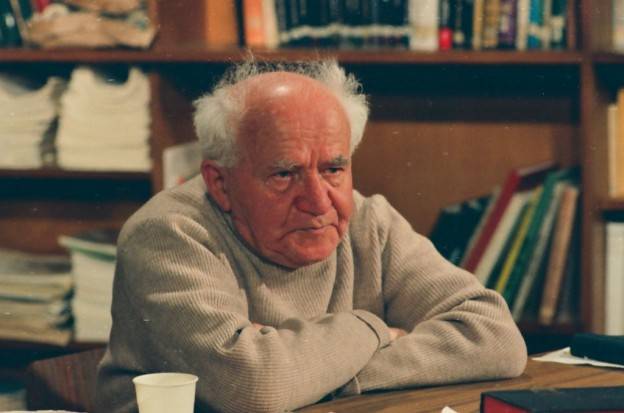
After all, before the start of actions against Egypt, he knew that both America and the Soviet Union would be against this war, but simply dismissed the interference. Choosing between military and diplomatic successes, he chose the military. When will the opportunity to make friends with the European powers at the level of military allies? When will a case of lime come up under the root of all the fidains running across the state border whenever they want? Again, the straits are closed and no vessel can get into Eilat ...
In fact, Ben Gurion had serious doubts. If anything brought him closer to Nasser, it was a deep distrust of England. Will the British participate in the proposed union? If so, will this fact be formalized by an official agreement, or will it remain a "gentlemen's agreement"?
Ben Gurion trusted his French partners and was ready to help them by providing both ports and airfields, and even by direct participation in hostilities, and all this under the honest gentleman's word, but he did not consider the English “gentlemen”.
According to the French plans, Israel had to start a war with an attack on the Sinai Peninsula, and “create danger” for the Suez Canal, which would provide an excuse for England and France to intervene, but where is the guarantee that Britain will claim does it exist, and will not abandon Israel without help in the war, or will it not even strike at Israeli airfields? In short, Ben Gurion demanded a formal alliance with Britain, albeit secret, but set out in writing and signed by the Prime Minister. The British did not want to hear about this kind of document, while the Israelis refused to act as an “English agent”, openly expressing doubts about the honesty of their potential allies.
The French were in a position in which two of their ally refused not only to trust each other, but even to speak directly - all negotiations were conducted only through the mediation of France.
Meanwhile, Israel had a flow of military materials from France — tanks, semi-tracked transporters, trucks, recoilless guns. They were put on jeeps, it turned out a mobile means of infantry fire support, something like a cart.
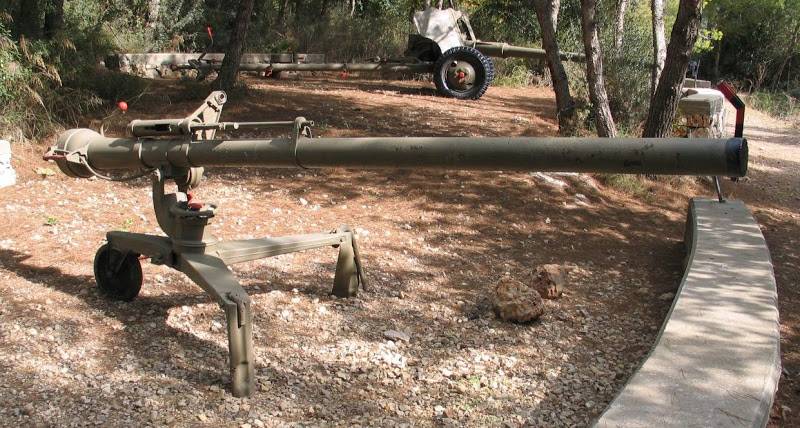
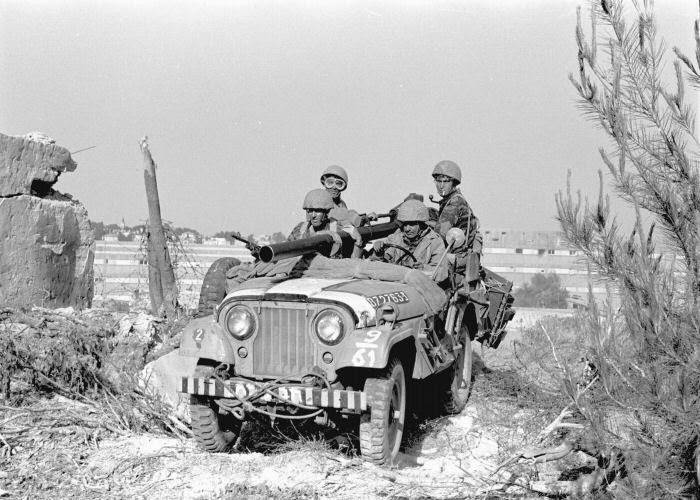
Ben Gurion reprimanded the condition that French fighters would be stationed at Israeli airfields as a precaution against possible bombing of Israeli cities.
The formal reason was that the Israeli pilots did not have time to master the new aircraft, but it is quite possible that Ben Gurion was rather afraid of the British, in any case, he was not less afraid of them than the Arabs.
The French representative, General Schalle, calmly accepted all the conditions - Egypt had a lot of aircraft in Sinai, and 4 divisions, and it was very important to divert them from the landing area.
The plan looked like this: Israel is launching an attack on Sinai. England and France immediately present both sides - Israel and Egypt, an ultimatum demanding a retreat from the Channel for 10 miles, which Israel immediately accepts. If Egypt refuses to do the same, then during the 72 hours the British and French will open hostilities against it.
France was interested in the channel.
Israel had its own interests - the cessation of fidainov raids from Gaza and the lifting of the blockade of Eilat.
An important motive was the fact of speaking at one with one, and maybe with two major European powers. Israel had no allies - only “well-wishers”, such as the United States, and the benefactors did not provide self-defense means.
By 9 October, it was decided and decided absolutely everything except one - will the British participate in the attack or not?
The question was extremely important, because without this condition, Israel refused to participate in the war - it would be too risky politically.
General Shalle persuaded the Israelis to agree to an operation without a formal agreement with the British.
"I heard that Shakespeare was a great playwright," Dayan told him. - "But I doubt that Eden is just as talented."
The conference opened in Sevres, in the villa of the Bonne de la Chapelle family.
Their 18-year-old son died in the Resistance, and they willingly offered their home to the French government without asking any questions. British and Israeli businessmen for the first time met at the same table for a direct conversation about the case. Negotiations were difficult. The British insisted on "... a real act of war undertaken by Israel in close proximity to the Channel" so that England could enter the war "... to save international shipping ...". Israel, on the other hand, was afraid to remain alone and in the position of the accused in an unprovoked attack on Egypt. In the end, the agreement was signed. It is said that Ben-Gurion folded it fourfold, put it in the breast pocket of his shirt and buttoned up, and Dayan drew a caricature of John Bull (England) and proud Marianne (France), politely inviting little Israel to go through the door first “just after you .. . "
Ben Gurion addressed the Knesset with a policy statement: “The strength of the Israel Defense Forces has grown significantly ... We are not as defenseless as we were a year ago ... Gamal Abdel Nasser proposes to erase Israel from the political map ... Egypt sends Fedayins from all Arab countries to sabotage against our military facilities and to the bombings of our homes ... According to the UN Charter, every member of the UN has the right to self-defense ... According to the Treaty of Constantinople 1888, the Suez Canal should be open to all ships all the days of the world and war. Then Ben-Gurion directly accused Egypt of having closed the Suez Canal and the straits in the Red Sea for Israeli ships, he was responsible for heightening tensions in the region. The experienced prime minister made it clear to the alliance with the Europeans with a very faint hint, without naming names. The Knesset correctly realized that the next call of reservists was not far off. Meanwhile, French officers were already secretly arriving in Israel to familiarize themselves with the army of new allies. The French Defense Forces were pleased with the Israel Defense Forces and decided to maximally strengthen it with the supply of weapons and the sending of French combat squadrons to Israeli airfields. In general, from the very beginning the French behaved obviously more soulful British.
Dayan discussed with Ben-Gurion the final details of October 25. To attack the Egyptians decided 29 October. Sinai grab for 7 - 10 days, moreover, that the British and the French will join the battle on October 31. Ben-Gurion decided to withdraw from the military order the usual phrase about "destroying the enemy's combat force", since he did not want the great losses of the Egyptians. In this war, Ben-Gurion believed, there was no need to make our way to the canal in the sand that was wet with the blood of enemies, and it was enough just to force the enemy to retreat.
The cunning Dayan decided not to start a war, as has been the case since World War II, with a massive air raid in the early hours of the day. He intended to launch a land offensive with a silent glanders, without aviation and shelling, so that the Egyptians get the impression that the Israelis started just another sortie to the border area. The aircraft was supposed to be launched from the third day of the war, when the Egyptians were already aware of the full scope of the hostilities.
The Europeans confirmed that in the morning of November 5 it is planned to throw a large airborne landing in areas that allow isolating the amphibious landing area, and at dawn on November 6, after a powerful fire preparation, land an amphibious landing force. The landing of the naval assault was planned to be carried out by the method of "vertical coverage", that is, the landing of a helicopter assault, which was supposed to impede the approach of the Egyptian troops to the coast, was provided to the tactical depth of the enemy's anti-amphibious defense. The immediate task of the British Airborne Forces was the capture and retention of the Gamal airfield, and the French, the railway and highway bridges south of Port Said. The landing areas of the airborne troops were elected near these sites.
Based on the objectives of the war, the Suez Canal area was considered the most suitable landing point for a naval assault. Finally, it was decided to land in Port Said and Port Fuad. This area is almost completely isolated from land, a bridgehead connecting to the mainland with a single narrow artificial isthmus, the seizure of which ensured the complete isolation of the landing sites of the amphibious assault forces. In the English zone (in Port Said) two landing points were designated, and in the French zone (in Port Fuad) - one. The total landing front was 6 km.
The day before the war, Dayan began to deal with the call of reservists, who had already been quietly walking for several days. True, they did not succeed in hiding from the Americans, and the US embassy began the evacuation of 2000 American citizens from Israel. Since the call of reservists was made secretly, the messengers could not find many persons liable for military service because of the change of address and similar difficulties. It was necessary to launch the entire summoning machine with phone calls, summons and messengers in order to assemble the required 100 thousand soldiers in time. In addition, there was also a mobilization system via radio. On ordinary radio, they could transmit something like “sleeping beauty, sleeping beauty”, and those who needed to know that soldiers of the 2 battalion of the 3 brigade should arrive at the Crifin base tomorrow at 8 in the morning with things. Many volunteers arrived with summoned reservists. Simultaneously with the soldiers were subject to appeal and personal transport. During the war, bread vans, trucks from orange plantations, cars collecting laundry for laundry, and other similar vehicles were subject to mobilization for the transport of soldiers and military cargo. The machines required 13 thousand and it was not possible to collect them all completely, as many were simply not on the move. Thus, the whole country learned that a big war was about to start. The weddings were postponed, the shops were closed, however, no one watched crowds of people in banks and shops. Nobody bought food in food stores - it was the end of the month and no one had any money before payday.
The allies were also preparing. For the overall leadership of the hostilities, a joint Anglo-French command was created with headquarters on the island of Cyprus. The English commander General Keitley was appointed commander-in-chief, and the vice-admiral Bargeau, the Frenchman, was appointed his deputy.
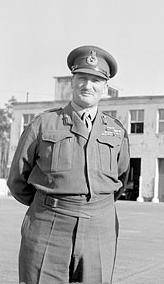
By the way, in 1945, in East Tirol and Carinthia, the army under the command of Keitley accepted the capitulation of the Cossacks who fought on the German side under the command of Peter Krasnov, Sultan-Girey Klych and Andrei Shkuro, and the XV Cossack Cavalry Corps of the SS under the command of Helmut von Pannwitz. At the Yalta Conference, the British pledged to return Soviet citizens to the USSR. Keitley transferred the Cossacks with their families to the Soviet Union, regardless of their citizenship, including those with French, German, Yugoslav and Nansen passports. The prisoners were tricked into Judenburg and forcibly transferred to SMERSH; Cossack generals, a number of commanders and privates were soon executed, most of the issued Cossacks (including women) were sent to the Gulag.
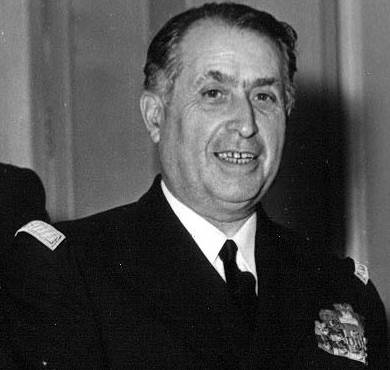
The Israeli command was not part of this headquarters, but their actions obeyed the general plan of the military campaign. In united english-french navy there were more than 130 ships and vessels, including 7 aircraft carriers, 3 light cruisers, 13 destroyers, 14 patrol ships, 6 submarines, 11 landing ships, 8 minesweepers, 60 transports and other ships and vessels. The ship’s convoy was merged into the 345th operational compound, which consisted of tactical groups of the intended purpose: 345.4 — aircraft carrier; 345.5 - landing; 345.7 - Marine Corps; 345.2 - maintenance. To make passages in possible minefields, a naval trawling service was created.
At the same time, Dayan received the latest data on the location of the Egyptian troops in Sinai. If you look at the map of the peninsula, it may seem that Sinai looks like an inverted pentagon. Its base is the Mediterranean coast. Two sides run down from it - the border with Israel from Rafah to Eilat and the Suez Canal from Port Said to Suez. Further to the south, the last two sides converge to the top, which is washed by the waters of the Red Sea and near which is located the village of Sharm e-Sheikh. One of these sides is the coast of the peninsula from the side of the Gulf of Suez (Suez - Sharm e-Sheikh line), and the other side is the coast from the side of the Gulf of Aqaba (Sharm e-Sheikh - Eilat). To this pentagon from above was added the Gaza Strip in the form of a finger pointing to Tel Aviv along the Mediterranean Sea. In this "finger", the Egyptians held three infantry brigades - № 5, 26 and 86.
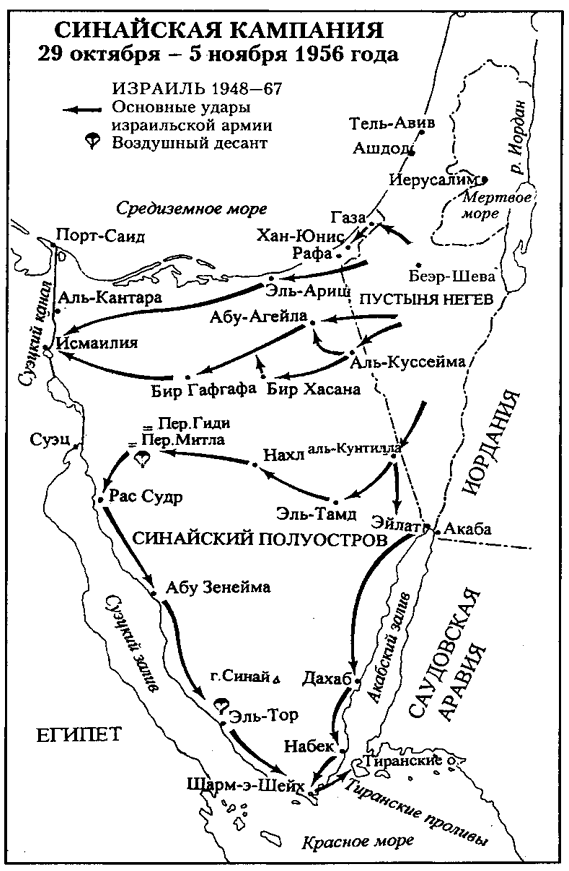
From the Israeli border to the Suez Canal there are only three roads. One of them goes along with the railway along the Mediterranean coast from Gaza and Rafah (Rafah) to Kantara on the canal. Not far from Gaza, near the village of El-Arish, it was covered by the 4-I infantry brigade, and there was an Egyptian aerodromchik. In Kantara, the 1-I Egyptian Division stood. The second road went southward along the unintelligible sand-stone landscape of the peninsula, practically from Beersheba through Bir Gafgafu in the center of Sinai and a low pass to Ismailia on the canal. South of this road began low mountains and desert. Therefore, the southern branch of this road passed to the channel through a more significant pass, called Gidi. The Egyptians covered the second road at the Israeli border with the 6 Infantry Brigade, stationed at Abu Ageil, and deployed the 2 Division in Ismailia. Further south, almost in the center of the inhospitable peninsula, there was a third road. If the first two were asphalt and more or less well-groomed, then this road was unpaved, but for tanks, armored personnel carriers, military trucks, much is not required. She walked from Kusseima on the Israeli border to the city of Suez at the southern end of the canal and closer to the canal passed through the Mitla Pass. The National Guard Brigade was stationed in Kussheim, and the 2 Infantry Brigade was stationed near Suez. Finally, even further to the south, were the ruinous places where only a few thousand Bedouins and six Greek monks lived in the Monastery of Saint Catherine on Mount Sinai in the desert and in the mountains burned out by the sun. There were practically no roads, only camel trails. The Egyptians covered this part of the Sinai with small frontier outposts in Kuntilla, Nahla, Tamada (Temed) and Nakebe near Eilat. At the southernmost point of Sinai, in Sharm e-Sheikh, were Egyptian gunners, who were supposed to fire ships going to Eilat through the Strait of Tiran.
Both Napoleon and Allenby advanced from Egypt to Palestine along the sea. The return trip was, of course, the same. Seaside road was the most convenient, but also the most protected. An offensive through the center of the peninsula could have been more successful, therefore the passes of Gidi and Mitla could have strategic importance if the main attack were really planned in the south. But the main battles were supposed to lead all the same in the north. Pulling troops to the border was also difficult. Through the Negev, only two major roads went to the Egyptian border. Military transportation could be carried out only at night, and two nights remained for the movement of the main body of troops and cargo. In an incomprehensible way, several thousand cars managed to get through at night to the border.
Just before the start of the land invasion of Sinai, the command decided to deprive the Egyptian units of communications and entrusted this task to aviation, as M.A. describes. Zhirokhov in his book "Brief story Israeli Air Force:
The design created by craftsmen failed the tests - one of the Mustangs was left without a hook immediately after takeoff, the pilot had to return and change to another fighter. However, this did not help either: the very first hook on the wires caused the cable to break, and to accomplish the task, the pilots resorted to a deadly trick - at a height of only a few meters from the ground they tore the wires with propellers and the wings of their old aircraft. Oddly enough, the Mustangs endured such atrocities. ”
When Dayan was informed about this recklessness, he could not understand for a long time how these wires did not get entangled in the propellers and not one of the planes was hurt. As for aviation, Dayan had another headache - Israel had practically no bombers. Immediately before the invasion, 70-year-old Ben-Gurion collapsed with the flu and fever, and Dayan had to deal with almost everything himself.
On the same day, in 15: 20, sixteen Dakota transport airplanes flew 395 paratroopers into the air and at a low altitude, inaccessible to the Egyptian radar, flew to the Mitla Pass.
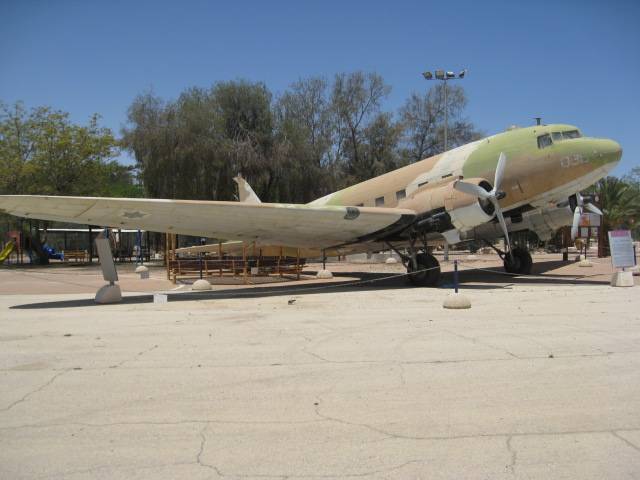
He commanded the paratroopers Rafael Eitan, Raful.
He had to seize the pass and hold it until the ground forces of his commander Ariel Sharon, Arik, approached. Slow-flying turbo-prop Dakotas covered fighter jets from above, but everything went smoothly. There was no Egyptians near the pass, and the parachutists did not jump under fire. However, the pilots missed and landed troops on 5 km east of the intended point. The paratroopers marched to the eastern entrance to the gorge of the pass and began to prepare positions on level ground. They were even able to level the place for a runway capable of receiving small airplanes. Towards evening they were delivered guns, mortars and even 8 jeeps.
The road Raful blocked, but the western entrance to the pass remained not blocked. Through it, the Egyptian infantry hit the pass and began firing at Israelis, alternating ground firing with air raids. Israeli planes attempted to cover Rafoul from above and were able to even destroy one Egyptian convoy, hurrying to the pass. Sharon rushed with the main forces across the border to join up with the landing force.
It took him thirty hours to see Raphu again. The tanks had to go all the way to the heart of Sinai on tracks with the corresponding losses. Armored personnel carriers of that time were quite peculiar. They had wheels in front, and caterpillars in the rear. The soldiers were sitting in an armored body without a roof, and a machine gun could be mounted above the driver’s cabin. And on such armored cars and six-wheeled trucks, Sharon approached the Egyptian fortifications near the Tamada, who saddled the road leading to the pass and Rafouli. Not great bastions, of course, but the Egyptians established minefields and barbed wire on both sides of the road and its fortifications and entrenched themselves firmly. Because of these minefields, Sharon couldn’t shine with any detour maneuvers and subtle tactics. And he decided that historians later dubbed "an unthinkable attack." There is in the military history the term "cavalry attack under Balaclava". Then, in the middle of the XIX century, in the Crimean War, during the battle of Balaclava, on an inaccurately formulated order, the English light cavalry brigade attacked Russian artillery positions with a frontal attack. The attack was very brave, but almost the entire brigade was exterminated by the fire of Russian cannons, which hit the riders in a dash. "Balaclava" has since become a household name for a bold, but stupid head-on attack. But now Sharon had to repeat this "Balaclava", but not because of stupidity, but because of the hopelessness of the situation. Instead of cavalrymen he had cars. And these armored cars rushed at full speed to the defensive Egyptian positions. Nobody expected such an attack in the forehead. One armored personnel carrier hit a mine, while the rest demolished roadblocks and broke into Egyptian positions. The Egyptians lost 60 people and fled, the Israelis lost 3 soldiers killed and 6 wounded.
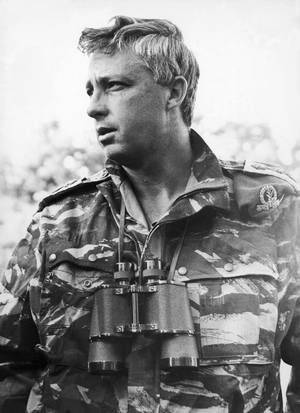
Without losing time, Sharon moved further along the road to the pass. During the first day of the fighting, the Egyptians really did not understand what the Israelis had in mind. When it came to them that a real war had begun, they already had the strength of Sharon for 200 km from the border. When he reached the paratroopers in the middle of the night, Sharon saw that Raful was in a serious situation. All Israeli forces were on a flat open area, and the Egyptians could shoot from above, from the pass, covered by the walls of the gorge. Sharon had 1200 fighters, several recoilless guns, several guns, and three light French AMX tanks. What is called the Mitla Pass is essentially a group of passes or one canyon, which stretches over 20 km. The Israelites were at the entrance to this canyon.
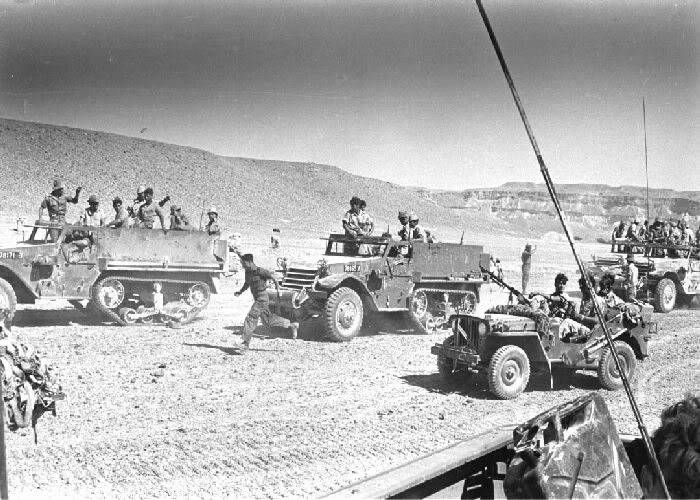
Then Sharon realized that if the attack of the Egyptian tanks and infantry on armored personnel carriers followed, then on a flat, as a table, terrain with this arsenal he would not be able to resist for a long time.
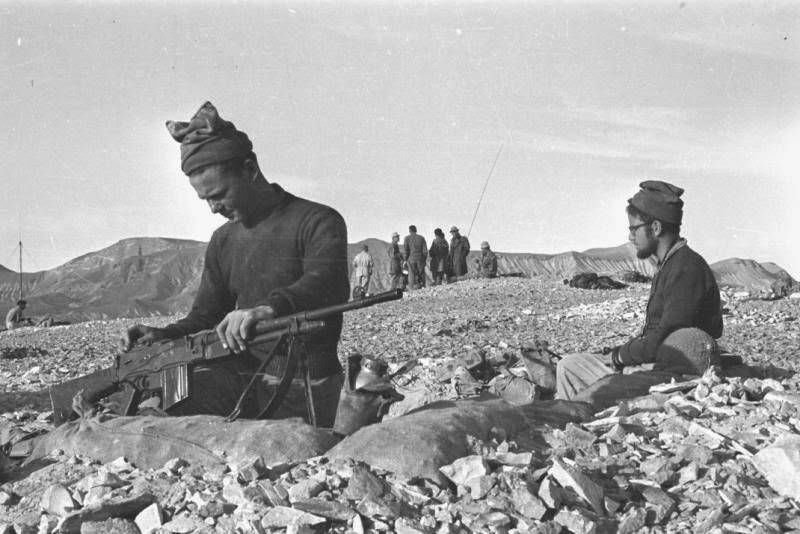
Meanwhile, the 202-th brigade of Sharon was completely alone in this part of Sinai, the main battles were deployed near Gaza and in the northern part of the peninsula on the two main roads described above, where the 7-th tank brigade attacked Abu Aguil, with the further goal of Bir Gafgaf , and the 27 Tank Brigade tried to cut off the “finger” of the Gaza Strip from the rest of Egyptian territory. South of the Sharon brigade was only the 9-I infantry brigade, which was to capture Sharm e-Sheikh, but which was standing and waiting for the order. The concept of "brigade" in the Israeli army at that time more consistent with the regiment in the Soviet Army. The brigade was divided into battalions.
Sharon decided to attack himself to take the pass, to gain a foothold on it and wait for further developments. He did not receive permission from this command from the command, since Dayan himself and the headquarters believed that the pass was greatly strengthened and there could be many casualties.
Sharon, as he wrote in his memoirs, did not expect large Egyptian forces at the pass, according to air intelligence. He addressed the Guru battalion commander: “Take all three of our tanks, two companies of soldiers on armored personnel carriers and go on reconnaissance to the pass, but do not join the battle with anyone!” “Not at all?” Mota Gur looked around, looking around three brand new french tanks. “Not at all with anyone,” Arik confirmed.
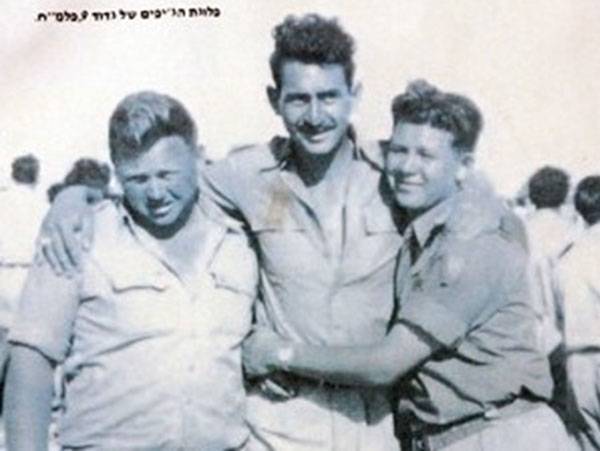
Mota loaded his army on armored personnel carriers and moved along the road to the pass. When they entered the gorge, the Egyptians opened fire and knocked down the first BTR, and after it the second. Gur did not depart, the paratroopers did not depart, not taking with him all the wounded and dead. Sharon himself was injured in 1948 and removed from the battlefield. He was wounded again during a raid on the village of Dir el Balla in 1954, and was again removed from the battlefield. Gur was involved in the battle, despite the uncomfortable position in the gorge. Egyptian aircraft appeared over the battlefield. Egyptian soldiers were sitting in caves dug into the walls of the gorge, and the Israelis were in full view. Marines were shelled from above and below, the number of dead and wounded grew rapidly. Guru reinforcements arrived under the command of Deputy Sharon Yitzhak Hoffi. Sitting on the road under fire was useless, and the soldiers Hur and Hoffy went on the attack on the caves. They threw grenades at the caves and fought Egyptians in hand-to-hand combat. Fresh forces broke the resistance of the Egyptians, and by the evening of October 31 it was all over. The Egyptians lost according to various sources from 150 to 260 soldiers and left the pass, while the Israelis were missing the 38 paratroopers, and 120 was injured.
It was the bloodiest battle for the war. Sharon did not know then the one thing that Ben-Gurion and Dayan knew. The southern pass Mitla was not particularly important strategically, since the main offensive was in the north. However, the landing at a point close to the channel itself was important so that the British and French could find fault with the fact of fighting in the immediate vicinity of the channel and intervene. If the battle is in Gaza, it does not interfere with navigation on the Suez Canal, but if the battle is on the Mitla Pass, then the British and French have a reason to intervene to "ensure the safety of navigation." But, as Dayan believed, for this purpose it was not necessary to put selected paratroopers 38. Sharon later wrote in his memoirs that if he were in the warm room of the General Staff, he could have made another decision, but being alone in the center of Sinai for 200 km from the nearest Israeli squad, he acted as he did.
The Europeans, on the other hand, received every reason to present an ultimatum to both warring parties, demanding that they stop fighting in the canal zone and withdraw their forces from the canal to 10 miles in both directions. The ultimatum was presented on October 30 in 18: 00 Israeli time, and Foreign Minister Golda Meir sat down to write a response.
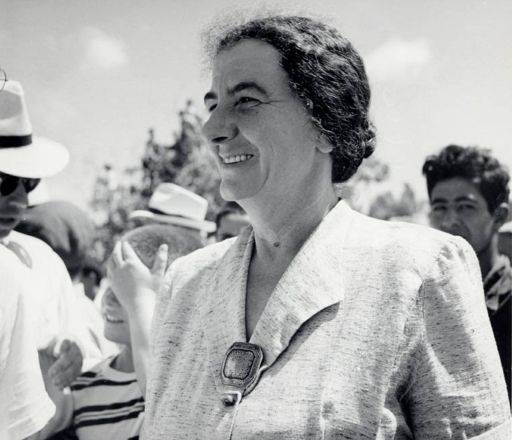
The response of the Israelites was already sent at midnight:
The whole essence of this creation of Golda Meir was in the last short phrase. The Egyptians who fought on their own land did not intend to divert their troops to any 10 miles and, accordingly, rejected the ultimatum. The manipulation calculated by the Europeans worked, and they could now get involved in the war.
In 19: 00 (Israeli time) 31 October 1956, the Anglo-French forces began to bomb Egyptian airfields in the canal zone. The bombardment did not begin after 12 hours from the presentation of the ultimatum, as expected, but after 25 hours. The chart was the following: in 17: October 00 29 paratroopers landed at Mitla; in 25 hours, on 18: 00 the next day, the Europeans presented an ultimatum; after another 25 hours, in 19: October 00 31, they entered the war. Total Israel fought one on one with Egypt 50 hours.
During these 50 watches, much has been done. In addition to the adventures of Sharon's brigade in the wild south of Sinai, fighting in the north of the peninsula unfolded both along the coastal road Gaza-El-Arish-Kantara and along the internal road Abu-Agale-Bir Gafgaf-Ismailia. The 7 Tank Brigade encountered the strong resistance of the Egyptians near Abu Ageyla and was unable to take the village in stride. Then Colonel Uri Ben-Ari decided to bypass these fortifications and move on, leaving the Egyptians to sit in the rear.
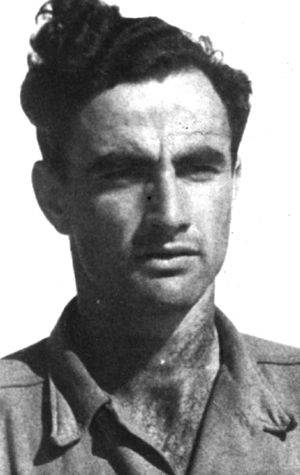
This risk was justified. The rest of the Egyptian troops quickly rolled to Bir Gafgafe and on to the canal. When the Ben-Ari forces were already at the 10 position, miles from the canal, Abu-Aguil suddenly realized that they were already far away in the rear of the Israeli forces. In the fortifications were 3000 Egyptians. Their commander committed, in fact, a war crime. He stated that the position was left and the soldiers should be saved, as much as they can. This meant that they would have to stomp a little less than 100 km across the sand to the canal. This insane order led to the death of almost all Egyptian soldiers, who were killed and robbed on the way by local Bedouins. There have been stories about Bedouins long ago that these guys can cut their throats on their trails to anyone who gets caught for a pair of socks. And there were cases when the socks were removed, and they did not pay attention to the wristwatch.
Israeli tanks entered Abu Ageyla on November 1 without a fight and learned about the incident. Not knowing that the Abu Ageyla garrison was gone, the Egyptians sent motorized infantry with anti-tank weapons and some tanks from El Arish. Not far from Abu Ageyla, at Ruafa, a strong battle broke out between the Egyptians and the Israeli tank crews. Almost all Israeli tanks were hit by anti-tank weapons, but remained on the move and continued to fight. Finally, the tankers ran out of ammunition. Then they removed machine guns from the tanks, took grenades and, on foot, continued the battle, which turned into hand-to-hand combat.
The Egyptians, consistently falling under the influence of British, German and Russian military doctrines, relied too much on their Sinai fortifications. Meanwhile, since the time of the Second World War, it was clear that such static defenses, even if they are defended by a sufficient number of troops and with good armament, cannot withstand the combined offensive of different types of troops for a long time, but can be simply surrounded or bypassed. All this became clear both under Abu Ageyla and under Ruafa. On the third day of the war, a tank battle took place between the legendary T-34s under the Egyptian command and the Israeli Shermans. The Israeli tankers later recalled that the T-34, of course, was superior to the Sherman in terms of weaponry and maneuverability, but the Egyptians slowly charged, almost never had time to shoot first. As a result, Israeli tank crews managed to knock out eight T-34s, while the Egyptians did not destroy a single Israeli tank.
In the same last days of October, the tank column of Haim Bar-Lev moved along the coastal road to the canal, cutting off the Sinai from the fortifications of Rafah (Rafah).
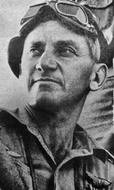
The tanks were assisted by the first infantry brigade, one of the battalions of which had to advance through a minefield to cut the road leading from Rafa into the depths of the peninsula. Rafu was defended by battalions of the Palestinian National Guard. Since the Egyptians already bombed both Israeli and European aircraft, Nasser gave the order to depart from Sinai. He believed to pull the troops from the peninsula to the canal in order to withstand the possible landing of a European landing force. But the officers understood his order as permission to escape. The Egyptians abandoned completely whole trucks and tanks and rushed west along the sand dunes. They took off all the heavy uniforms, even military boots, threw down their arms and rushed in groups on foot to the canal, eating dates from palm trees and quenching their thirst with water from wells. The officers left their soldiers. Thousands of them were captured. El-Arish was abandoned, and even rich military depots were not detonated. Moreover, evacuating the city, the Egyptians threw in it their military hospital with all the wounded. One soldier was found dead on the operating table after the leg was amputated. He was left during surgery and he died from blood loss. At the same time, doctors and medical staff left with the troops and 18 injured died at the time of the approach of Jewish units. Bar-Lev stumbled on a coastal road on a traffic jam from abandoned 385 vehicles, including 40 brand new Soviet tanks, and half an hour on October 31 cleared his way further. In 5 hours of the evening he was already in 30 km from the channel.
Unexpectedly, in connection with this hasty retreat, another problem arose with the local Sinai Bedouins. They kept a strict neutrality, but robbed and dragged everything that remained unattended. Israeli forces detained two long caravans of camels loaded with weapons. After that, Dayan issued a special order to collect and store weapons on protected sites.
During the battles, Dayan realized that the Egyptians are well-armed, even too good for a third-world country, but their actions are effective only in static defense in equipped positions with prearranged sectors of shelling. If the actions of mobile units — tanks and motorized infantry — were required, then the Egyptians were weak because they had not yet learned how to launch these types of troops correctly. Egyptian pilots were not afraid to attack the four of them or two of them, but they were constantly losing duels with Israeli planes.
Now there are two most important things left: to count with the fidains in Gaza and seize Sharm e-Sheikh to lift the blockade from the port of Eilat. In the Gaza Strip, the strongest fortifications were at the junction of the Sinai sector, around Rafah (Rafah), where there were many refugee camps. The attack on these fortifications began on the night of October 31 on November 1. In the Second World War, when planning a night operation, they usually tried to wait for the full moon in order to better control the troops. So it was, for example, during the fighting at El Alamein. Israeli military full moon did not wait. Jewish strategists tried to include in the plan of attack the actions of the navy and aviation. As a result, the sailors very weakly fired at the battlefield with ship cannons, and the pilots missed in the dark. In the dark, the Israeli battalions confused the positions of the enemy and attacked not by disposition, but which trench would turn up first. The Egyptians tried to shoot in the darkness with cannons and machine guns, the Israelis cut the barbed wire, Israeli armored personnel carriers entered the minefield and did not know about it, because the bakelite mines under their tracks did not explode. As reports arrived from the battlefield, Dayan grabbed his head, realizing that instead of his beautiful “offensive in three directions” plan, an indiscriminate “wall to wall” fight was going on at night. For all this turmoil, the losses were surprisingly small. So, one of the Israeli battalions lost in the attack 2 people killed and 8 wounded. In one place, the soldiers came upon anti-personnel mines. Then they jumped on the tanks and overcame the minefield.
2 November, the British government announced the establishment of a naval blockade of the Egyptian coast. Merchant ships of all countries of the world were forbidden to enter the region of the eastern Mediterranean Sea, limited by the parallel 35 ° north latitude and the Egyptian coast and the meridians 27 and 35 ° east longitude, as well as the northern part of the Red Sea. In the area of Egypt’s main naval base, Alexandria, a near-sea blockade was established. Here the ships of the allied fleet carried the blockade patrol until the end of the military operations. In other areas of the blockade zone, tactical groups of ships and carrier-based aircraft patrolled.
After the fortifications in Rafa fell, the Egyptians in the Gaza Strip were surrounded and resisted weakly. Israeli forces were expecting more desperate resistance, as Khan-Yunis was defended by a whole brigade, and the Egyptian brigade of the National Guard took up positions behind minefields. The city of Gaza was taken on the morning of November 2. UN observers and refugee officers were brought down. For once, foreigners began eagerly cooperating with the Israeli troops. UN workers began to press the Egyptian commander, urging him to surrender so that the civilian population would not suffer. As the Egyptian hesitated, the UN agents surrendered him to the IDF, saying that the Egyptian commander was hiding in the building of the police station in the north-western part of the city. Sometime during World War I, the British laid 10 thousand soldiers on the outskirts of the city. When Jewish tanks broke into the city itself, its defenders quickly surrendered. The assault on Gaza began in the morning on 6, and already on 14: 20, the governor-general of the Gaza Strip, Mahmed Fuad e-Dagawi, and General Rajaani Gaza surrendered. The city itself handed over bigbasi (colonel) Gamal Adin Ali on conditions of unconditional surrender. In the short period between governments, local people rushed to rob UN depots. A curfew was introduced in the city, and Israeli soldiers strolled through the deserted streets of old Gaza, stinking of uncleaned garbage. It was evident that the Egyptian authorities did not care much about the cleanliness of the city.
The northern part of the Gaza Strip was taken not by regular troops, but by kibbutzniks from the kibbutz Yad Mordechai and its environs. Over the past few years, they have accumulated a lot of questions to the residents of Gaza. Most feeds were known. Sector combed, found them on the already prepared lists and all were shot on the spot.
In Gaza itself, there were 60 000 people, and nearby there were two refugee camps for 50 000 people in each. Egyptian soldiers hid in the city and after it was surrendered. In addition, at the very beginning of the war, the Egyptians handed out weapons to the local residents, believing that everyone would fight for every house and alley. Nobody fought, but they did not hurry to surrender their weapons despite the orders of the Israeli commandant. The Israelis surrendered about a thousand assault rifles, rifles and revolvers, but this was only a small part of the entire weapon. Everyone knew that weapon prices were high in Jordan and that the Bedouins had established smuggling trails through the Hebron Highlands.
As envisaged by the plan, the Anglo-French aircraft began bombing Egapt military and industrial facilities using British and 300 French aircraft. The first strikes were carried out on the airfields of Almaz, Abu Sueir, Inhas, Kabrit. As a result of these attacks, more than 240 Egyptian aircraft were destroyed. During one of the bombings in the Suez Canal zone, the Egyptian frigate Akka was sunk, in connection with which navigation along the canal was paralyzed. Later on, several more ships and vessels were sunk in the channel.
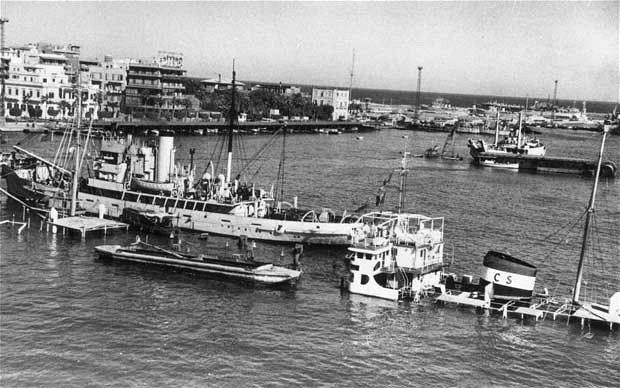
The French actively bombed Egypt, taking off from Israeli airfields and reaching even to ancient Luxor in Middle Egypt. The engineering units of the Syrian army blew up the stations on the way of the British oil pipeline from Iraq, which was going through the territory of Syria, and the supply of oil to England stopped.
Accompanied by the Anglo-French bombing, and anticipating the landing of European paratroopers in the channel zone (the Allied landing began only on November 6), the Israelis distracted themselves from the channel and began to solve their problem - the seizure of Sharm el-Sheikh, the opening of the Straits of Tirana, lifting the blockade from Eilat. Moreover, there was no special interaction between the Israelis and the British.
The 9 Brigade, commanded by Abraham Ioffe, was ordered to move south, and the overdue soldiers, crossing the border between Eilat and Kuntilla, moved along the Sinai coast of Eilat to the southern tip of the peninsula. It is easy to say "moved", the brigade was accompanied by 220 vehicles, and half of them were middle-aged civilian drivers who were not known to the brigade. Ioffe ordered to load two and a half tons of cargo on each side - ammunition, gasoline, oil, food and water for 5 days. The roads were, of course, bad. Therefore, Ioffe distributed three repair shops along the length of the column. If the car broke down, a workshop picked it up on the side of the road and tried to repair it. If the machine was not repaired by the time the tail column appeared, it was left and waited for the main workshop to arrive. Thanks to such an organization, the course of the column did not slow down. After hitting the rally in Egyptian sloppiness and off-road, Joffe lost all 10 machines that could not be repaired and disassembled for parts for the rest.
Dayan decided to back up Joffe’s offensive with the actions of Sharon’s paratroopers, who had nothing to do with the channel. So the 202 Brigade moved south along the Sinai Bay of Suez. Part of it landed with parachutes at the Egyptian A-Tour airfield (Thor), while the rest seized oil wells along the way. In addition to the airfield, A-Tour had a small harbor, a leper colony, quarantine rooms, and served as a transit point for Islamic pilgrims to Mecca. The paratroopers imposed a curfew on the town. Dayan flew to A-Tour to check on how the soldiers were doing, and ran into a delegation of Greek monks who lived in the town and were responsible for delivering food to St. Catherine’s monastery on Mount Sinai. They assured the chief of staff of the loyalty of all 70 Christian families in the town, and Dayan ordered the curfew lifted.
Joffe, with the support of aviation, attacked the approaches to the town of Sharm e-Sheikh after dinner on November 4. The Egyptian coastal cannons, which closed the strait, stood at Ras Nasrani, a little before reaching Sharm e-Sheikh. On the side of the road, thick barbed wire fields, concrete machine-gun nests, bunkers and a network of trenches defended positions. The Egyptians left most of these fortifications without resistance. By the folly of the commanders, one and a half thousand Egyptian soldiers retreated to Sharm e-Sheikh himself, whose fortifications were much weaker. In the early morning of November 5, Joffe got to Sharm el-Sheikh before Sharon's paratroopers. On 3: the morning 30 was stormed, the Egyptians lost 100 (according to other sources, 200) the soldiers were killed and the war ended. Egyptian 864 surrendered. Abraham Ioffe respected the Geneva Conventions, fed all rations of prisoners of war with the rations of the Israeli army, while Ioffe’s soldiers received immense Egyptian supplies, including a flock of 500 sheep. Less than seven days passed from the moment Rafoul landed on Mitla and until the hoisting of the Israeli flag in Sharm.
Another 31 of October in the areas of concentration began the landing of British and French troops and loading of military equipment on landing ships and transports.
By November 1, the combined Anglo-French fleet consisting of 5 aircraft carriers, 3 light cruisers, 6 squadron destroyers, 4 patrol ships and 8 minesweepers occupied the waiting area, remote 60-150 km north of Port Said. The airborne troops arrived in the area on the night of 4 on 5 in November and continued to maneuver there until dawn of November 6. 5 November in 7: 30 Anglo-French aircraft began dropping airborne assault forces, which was anticipated by powerful aviation training. More than 200 aircraft participated in the strike at the same time. By this time, the Israelis had practically completed the mission entrusted to them.
In the middle of November 5, the Anglo-French command presented an ultimatum to the military governor of Port Said, demanding that the city be surrendered. In this case, the Egyptian troops had to lay down their arms. The ultimatum of the Egyptian side was a deviation in 23: 30 battles resumed. At dawn 6 November after a powerful aviation and artillery preparation, which lasted 45 minutes, the landing of naval assault began. In the English zone, the landing was made by two echelons. The first echelon, consisting of two battalions of marines, reinforced with tanks, was landed on two points: “red” - 400 m wide and “green” - 350 m. The countering to the landing was weak. Simultaneously with the first echelon assault detachments, the aviation control group was landed, whose task was to call and distribute the planes to the strike targets, which greatly increased the effectiveness of the air support.
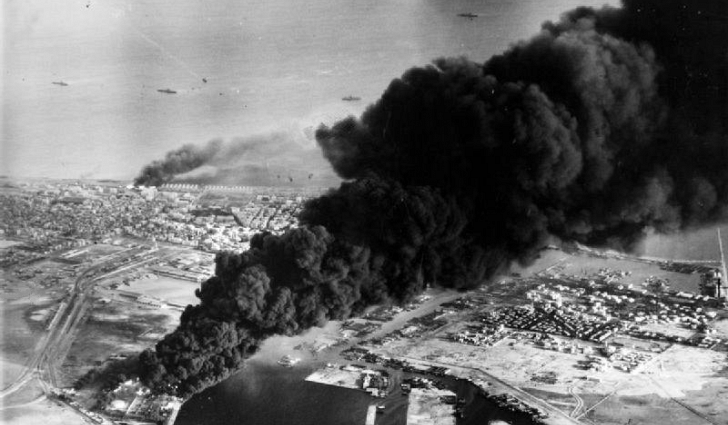
On November 7, the Anglo-French forces captured Port Said and advanced along the Suez Canal for 35 km. Aviation from the airfields of Cyprus, Malta and from aircraft carriers covered the landing of a naval landing, blocked the airfields of the enemy, struck blows at concentrations of manpower and equipment. It was a war in a European way, with broad gestures. From 8 to 20 in November, second-tier troops landed in Port Said. During this time, up to 25 thousand people were landed, 76 tanks were unloaded, 100 armored vehicles and over 50 large caliber guns. The total number of troops landed exceeded 40 thousand people.
Dayan constantly had the impression that he would have achieved such results with clearly less forces.
Продолжение следует ...
Sources:
Tenenbaum B. The Unsuspected Arab-Israeli War of 1956. 2011.
Shterenshis M. Israel. The history of the state. 2009.
Israel after 40 years by Aaron S. Klieman.
Arab-Israeli wars. Arab look. 2008.
Israel's Secret Wars, Black & Morris, 1991, Grove Press, New York
Personal Witness, Abba Eban, 1992, GPPuthnam's Sons, New York
Wikipedia articles, Cyclopaedia, etc.
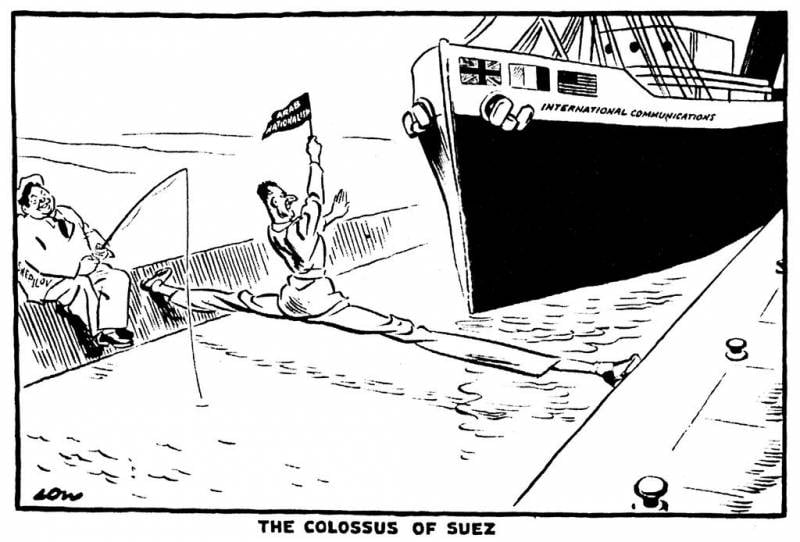


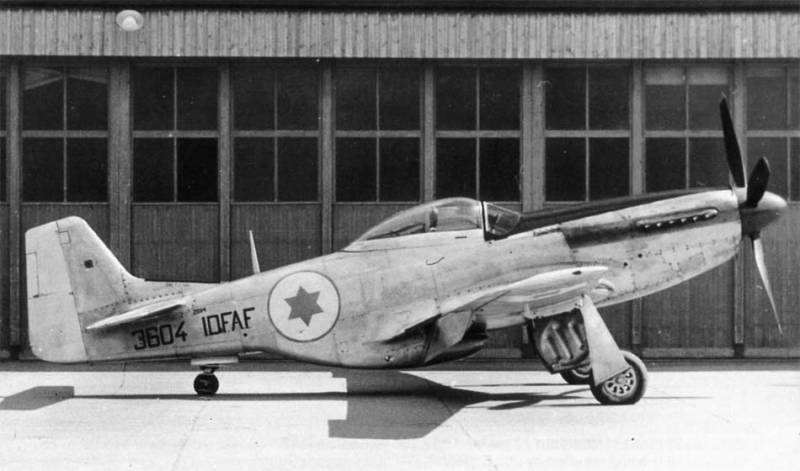
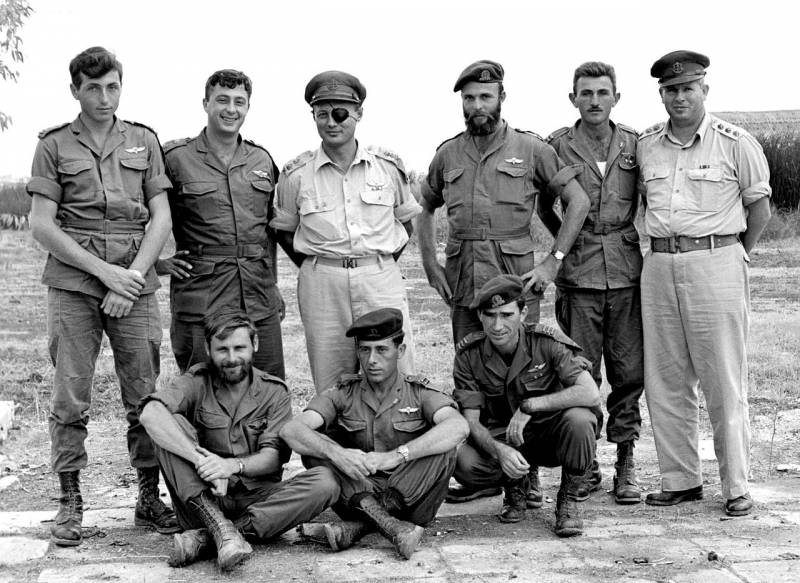
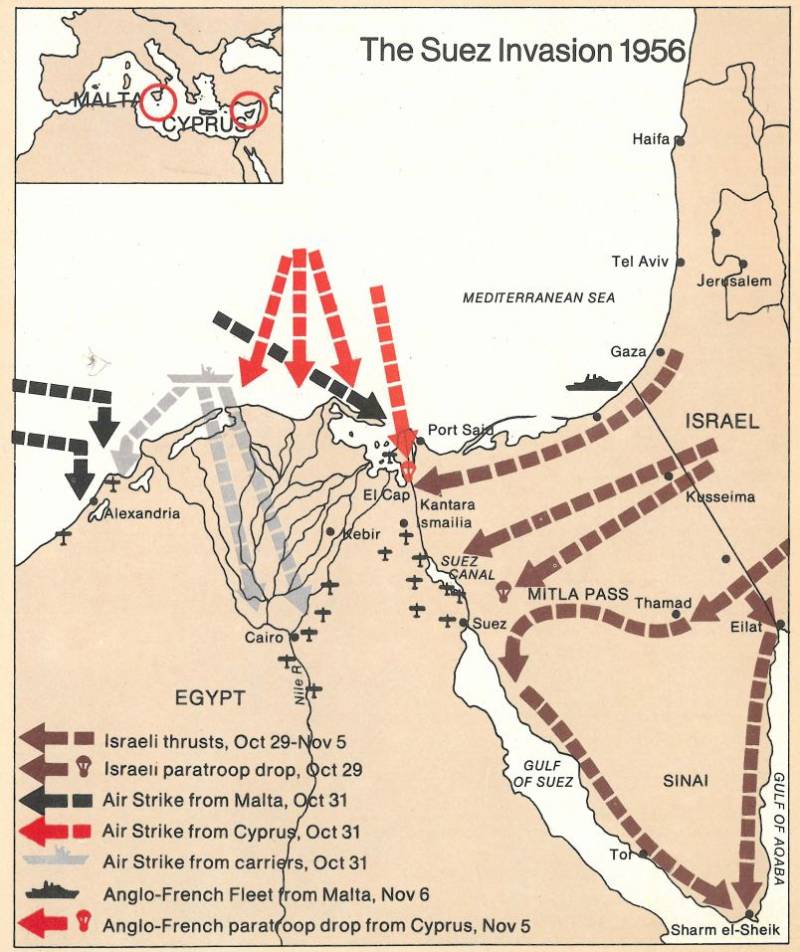
Information